Used Ram 1500 Quick Facts
- A 2021 or newer Ram 1500 truck is the best-used choice, followed by a 2014-2015 V8 for those on a tight budget.
- Newer Ram 1500 pickups use a coil-spring rear suspension for a smooth, un-truck-like ride.
- The Ram 1500 TRX roars to life with a 702-hp supercharged Hemi V8.
A used Ram 1500 full-size pickup truck offers a wide variety of trims, features, engines, and configurations. Depending on the year, the Ram 1500 also offers impressive tech and interior design, as well as one of the smoothest rides of any full-size pickup. Before 2011, the Ram 1500 was a member of the Dodge division, known as the Dodge Ram. Although the name may have changed, the truck’s lineage and development remain. Throughout its life cycle, the Ram 1500 pickup has chalked up quite a few firsts, including a massive Mega Cab on the 2006-2008 models, a coil-spring rear suspension, and a Hemi V8 engine. Regarding towing and payload, the Ram 1500 falls within a few hundred pounds of its rivals from Ford and Chevrolet, and bests the Toyota Tundra.
- What Is the Best Model-Year Used Ram 1500?
- Ram 1500 by Generation: Which Should You Buy?
- What’s the Most Weight a Ram 1500 Can Tow and Haul?
- What’s the Difference Between a Ram 1500 and a Ram 2500?
- What’s the Longest Bed I Can Get on a Ram 1500 Crew Cab?
- What Are the Issues to Watch Out for With a Ram 1500?
- Does the Ram 1500 Offer a Hybrid Engine Option?
- Is the Ram 1500 a Good Vehicle?
What Is the Best Model-Year Used Ram 1500?
The Ram 1500 has a lot going for it. Under the hood, most years offer a choice of engines, including a powerful Hemi V8 and a fuel-efficient 3.0-liter diesel. For used buyers, the best years depend on which features and configurations you need in a truck. For example, Ram ended single-cab model (1500 Classic) production after the 2024 model year, leaving only the 4-door Quad Cab and Crew Cab models. Hemi V8 enthusiasts should skip the 2025 trucks, as they only offer a twin-turbocharged inline-6-cylinder engine called the Hurricane.
As far as reliability goes, the Ram has an average record, with some years better than others. Ram also confuses the mix with the Ram 1500 Classic, a fourth-generation Ram that carries over after the fifth generation’s debut. For those seeking a good used truck that still offers a healthy dose of style, power, and technology, a 2021 or newer Ram 1500 should do nicely. Those looking for a lower price might look to the 2015 Ram 1500. If you’re considering anything older than 15 years, be aware of potential issues with the transmission, front suspension, and electrical components. Older Ram models also have problems with rust, particularly around the wheel wells and outer bed walls.
See used Ram 1500 pickups near you
Ram 1500 by Generation: Which Should You Buy?
Fifth Generation: 2019-Current
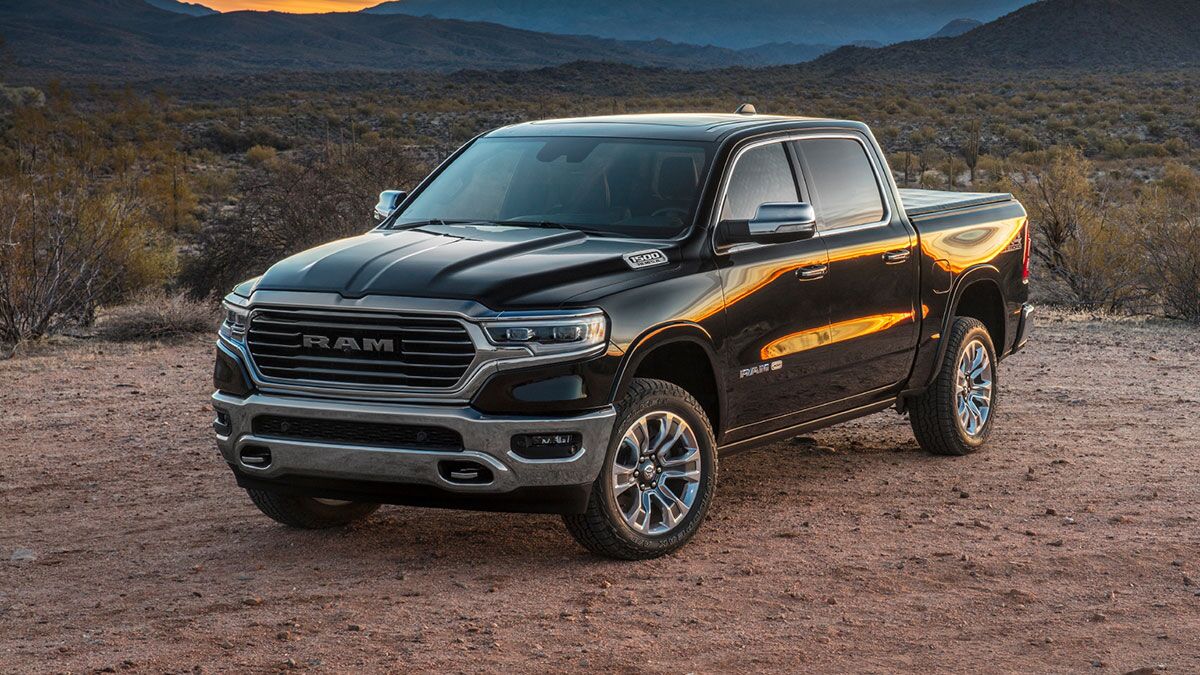
The fifth-generation Ram 1500 improves on the previous generation but also sacrifices some features, such as the Regular and Mega cabs, some trim levels, and, of course, the Dodge name.
During this time, Ram continues to build the fourth-generation, named Ram 1500 Classic, alongside the new truck. We’ll deal with the fifth generation in this section, but if you’re looking at the Classic, jump to the fourth-generation section, which will tell you everything you need to know.
The 2019 Ram 1500 offers a couple of engine options. A 395-horsepower 5.7-liter Hemi V8, that same engine with the eTorque system, and a 305-hp 3.6-liter Pentastar V6 with eTorque. In 2020, a 260-hp 3.0-liter EcoDiesel rejoins the lineup. All engines pair with an 8-speed automatic transmission. One specialty engine unique to the TRX trim is a 702-hp 6.2-liter supercharged V8.
In 2025, Ram discontinued the Hemi V8 and replaced it with a twin-turbocharged inline-6 cylinder engine developing 420 hp (540 hp in the RHO).
When properly equipped, the fifth-generation’s max towing weight is around 12,750 pounds, and the max payload is 2,300 pounds (5.7-liter eTorque Hemi V8).
Cab configurations are limited to Quad Cab and Crew Cab, although the Crew Cab is four inches longer than the fourth generation, significantly improving rear seat legroom. Bed choices are 5-foot-7-inch and 6-foot-4-inch on Crew Cab, while Quad Cab uses a 6-foot-4-inch bed.
Although this generation sees fewer trims, there are still plenty to choose from, ranging from rugged laborer to divine luxury. The mix includes Tradesman, Lone Star, Big Horn, Laramie, Rebel, Laramie Longhorn, Limited, Tungsten, RHO, and TRX.
For 2024, the 1500 Classic was offered primarily as the Tradesman and Warlock in Regular, Quad, and Crew Cab configurations.
The fifth-generation Ram 1500 is the most technologically advanced to date. It includes an available hands-free driving assist system (2025), a robust list of advanced driver assist systems, cutting-edge infotainment, and digital information screens for both driver and passenger. There’s even an optional bacteria-killing UV glovebox and numerous assist systems for trailering and off-roading.
Model-Year Changes:
2025: The Hemi V8 gets replaced by the Hurricane I6. A planned plug-in hybrid option, previously known as the Ramcharger, will adopt the Ram REV name from the canceled Ram REV 1500 electric truck. Ram’s first hands-free driving assist system also debuts.
2024: Ram drops the 3.0-liter EcoDiesel and the mighty TRX trim, while the Warlock gets an off-road package.
2023: A new Limited Elite trim, a digital driver display, and a standard LED hitch light arrive.
2022: Uconnect 5 is now standard on Big Horn and higher trims. Several new editions, including a Limited 10th Anniversary Edition, G/T, BackCountry, and Longhorn SouthFork, are also available.
2021: The TRX debuts, and new options include a head-up display, a digital rearview mirror, and Trailer Reverse Steering Control.
2020: A revised 3.0-liter EcoDiesel returns, and more trims offer advanced driver assists.
See 2019 to current Ram 1500 pickups near you.
Fourth Generation: 2009-2018
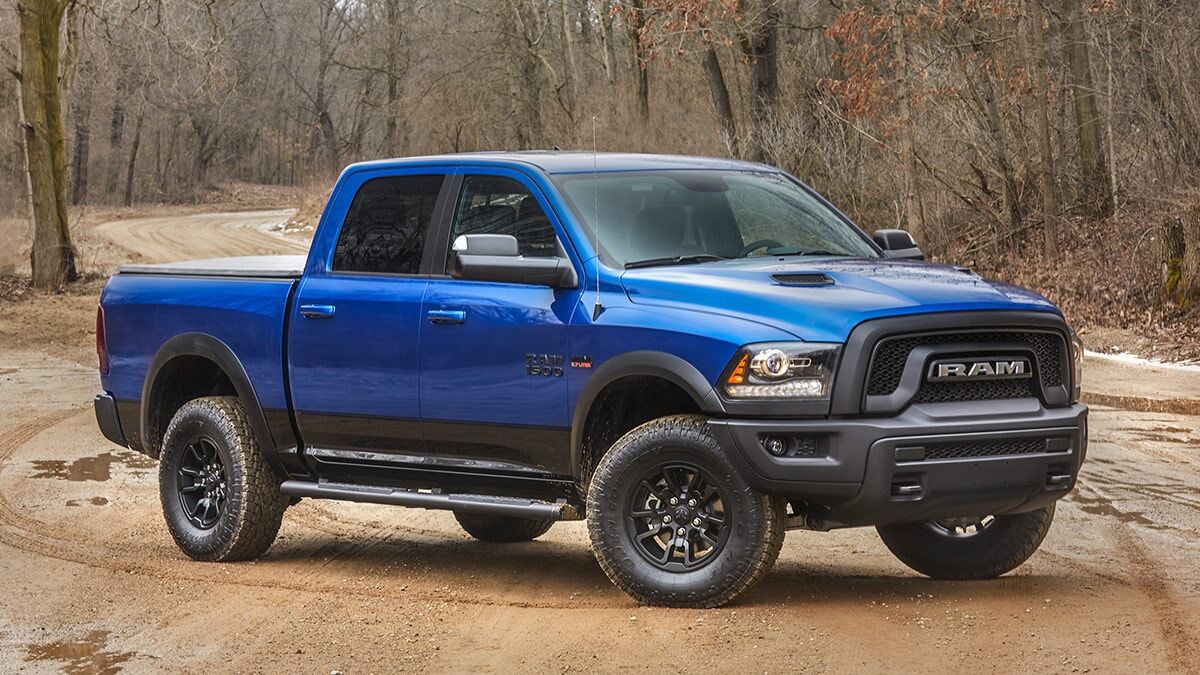
The fourth-generation Ram 1500 covers a lot of ground, including the 1500 Classic that carries over into the fifth generation’s model run. This period is also when Ram Trucks stray from the Dodge ranch into a field of its own, explaining why the 2009 and 2010 models are labeled as the Dodge Ram 1500, and those from 2011 and newer are simply referred to as Ram 1500.
If you’re looking for a Ram 1500 with plenty of power, features, and options but at a much lower price than a fifth-generation Ram 1500, this is where you’ll want to shop.
The fourth-gen Ram 1500 offers three cab sizes: Regular, Quad, and Crew. It also offers three bed lengths (5 feet 7 inches, 6 feet 4 inches, and 8 feet).
Under the hood, the engine lineup varies by year. Early models offer a choice of a 210-hp 3.7-liter V6, a 310-hp 4.7-liter V8, or a 390-hp 5.7-liter Hemi V8. Max trailering jumps to 9,100 pounds (rear-wheel-drive Regular Cab long bed). After 2013, a new 305-hp 3.6-liter Pentastar V6 replaces the old 3.7-liter V6. For 2014, the 240-hp 3.0-liter EcoDiesel arrives, and the 4.7-liter V8 departs.
Unique features of the Ram 1500 include an available air suspension, a heated steering wheel, rain-sensing wipers, and power-adjustable pedals.
Familiar trim names include Tradesman, SLT, Express, Lone Star, Lone Star Silver, Harvest, Big Horn, Laramie, Rebel, and Limited.
Ram makes numerous changes during this run, including new trims and features. If you’re looking for a powerful truck with better safety tech, Apple CarPlay, Android Auto, and more off-road and trailering upgrades, a 2018 or later Classic is your best bet. If you’re looking for more advanced driver-assist systems, such as automatic emergency braking and adaptive cruise control, you should consider the fifth-generation truck.
Model-Year Changes:
2018: Apple CarPlay and Android Auto join the 8.4-inch Uconnect touchscreen, which also includes on-board Wi-Fi and a rearview camera.
2017: The Rebel gains an 8.4-inch touchscreen, dual-zone climate control, and a limited-slip differential.
2016: A redesigned frame and body structure help improve small-overlap crash test scores.
2015: Max towing increases to 10,700 pounds.
2014: The 3.0-liter EcoDiesel joins the engine roster, offering 420 lb-ft of torque, more than the Hemi V8.
2013: New upgrades include a 3.6-liter Pentastar V6, an 8-speed automatic transmission, a multimode air suspension, and the next-generation Uconnect system.
2012: Minor upgrades include improved audio systems, available side-impact airbags, a heated rear seat, and an improved bed/cargo management system.
2011: Ram becomes its own brand and celebrates by introducing a low-cost Tradesman trim.
2010: The Ram’s GCWR increases to 15,500 pounds, up from the previous 14,000 pounds.
See 2009-2018 Ram 1500 pickups near you.
The Dodge Ram 1500’s Early Years: Generations 1-3 (1981-2008)
2002-2008
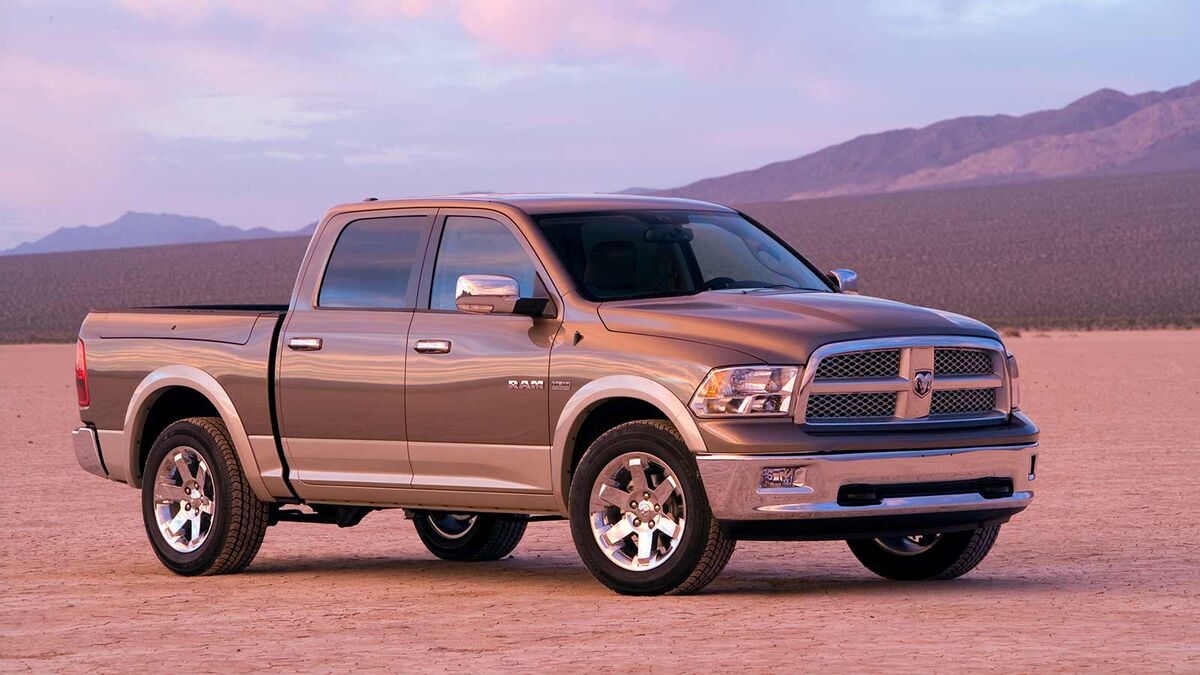
The third-generation Ram 1500, built on the radical looks of the second generation, retains the big-rig-like front end but features a new frame, suspension, engine lineup, and equipment roster. The previous generation’s extended cab morphed into the Quad Cab, which featured rear-hinged back doors. The Mega Cab served as a substitute for the Crew Cab for two short years, offering the largest cabin of any full-size truck.
Most Ram trucks of this era had one of four engines: a 3.7-liter V6, a 4.7-liter V8, a 5.7-liter V8, or a 5.9-liter V8. These are the last 1500 models offering a manual transmission.
This generation also spawned the tire-smoking SRT10, armed with the Dodge Viper’s V10 engine. Other notable names include the Rumble Bee, Power Wagon, Hemi GTX, and Daytona. Many feature wild colors from Dodge’s muscle car glory days, along with unique wheels and bold graphics.
See 2002-2008 Dodge Ram 1500 pickups near you.
1994-2002 Dodge Ram 1500
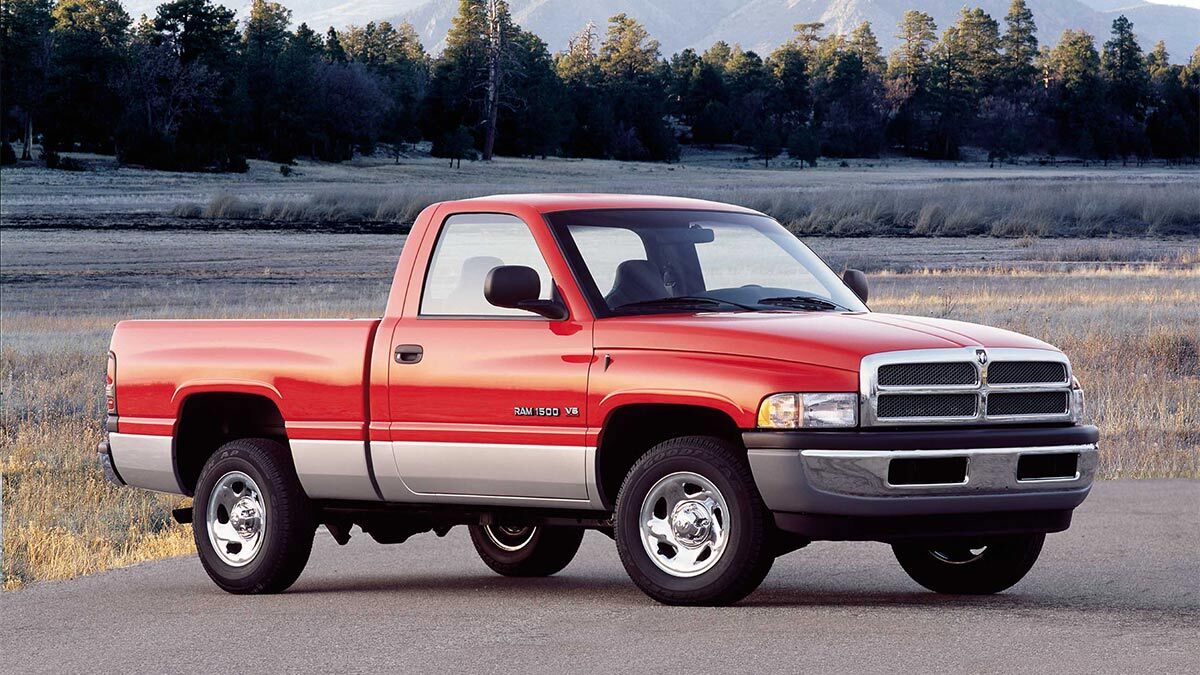
The second-generation Ram 1500 changed everything for Dodge and set the industry on a new path to designing more stylish trucks. Copying the look of a big-rig truck, the Ram 1500 was about as far a departure from the original as space would allow. Dodge improved the cabin for this generation with more car-like upholstery, dash designs, and features.
The engine lineup comprises a 3.9-liter V6, a 5.2-liter V8, and a 5.9-liter V8, all of which are available with either a manual or automatic transmission and either rear-wheel drive (RWD) or 4-wheel drive (4WD).
During this run, Dodge ditched its extended Club Cab and replaced it with a Quad Cab, featuring rear-hinged half-doors that allow easy access to the rear seat.
See 1994-2002 Dodge Ram pickups.
1981-1993 Dodge Ram (pre-‘1500’) name
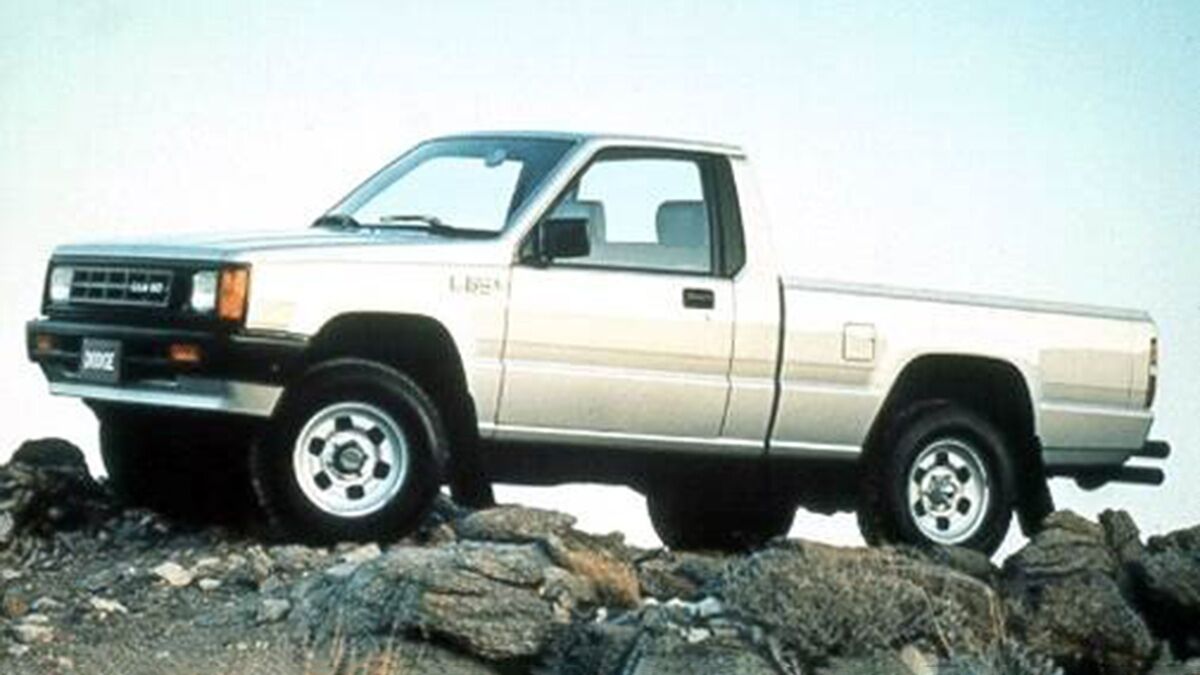
The original Ram 1500, initially called Dodge Ram pickups, looks dowdy by today’s standards, but it’s now among a group of older pickups gaining value as future collectibles. Although it never sold as well as the Ford F-150 or Chevrolet C/K, the Ram 1500 offers all the same equipment, including two bed sizes, a choice of V6 or V8 power, and three cab sizes, although the Club and Crew Cab are limited to just a few model years.
See 1981-1993 Dodge Ram pickups near you.
What’s the Most Weight a Ram 1500 Can Tow and Haul?
When equipped with the 5.7-liter Hemi V8 and eTorque system, the fifth-generation Ram 1500 has a max trailer rating of 12,750 pounds and a max payload of 2,300 pounds. The standard 5.7-liter V8 can pull up to 11,610 pounds, while the Pentastar V6 tops out at around 7,700 pounds. The 3.0-liter EcoDiesel is rated to tow up to 12,560 pounds, and the supercharged 6.2-liter V8 is rated to tow up to 8,100 pounds.
Earlier generations have tow ratings on par with rivals of the day, with the fourth-gen Ram 1500 maxing out around 10,400 pounds. The V6 models top out near 7,600 pounds.
What’s the Difference Between a Ram 1500 and a Ram 2500?
The Ram 1500 is a 1/2-ton pickup. Ram 2500/3500 (3/4- and 1-ton) use heavier frames, brakes, and axles, with available 6.4-liter HEMI gas or 6.7-liter Cummins diesel. Tow/payload can reach 20,000-pound towing and 4,420-pound gas payload, depending on spec.
What’s the Longest Bed I Can Get on a Ram 1500 Crew Cab?
Ram offers two bed lengths on the fifth-generation Ram 1500 Crew Cab: 5-foot-7-inches and 6-foot-4-inches. The same goes for the fourth generation.
What Are the Issues to Watch Out for With a Ram 1500?
When it comes to engines, early versions of the big Hemi V8 have fewer issues than the V6. However, the Hemi is not without fault, with headaches centering around its top end (lifters), exhaust manifold leaks, and coolant issues. On the plus side, Hemi owners report surprisingly good fuel efficiency on the highway and mixed driving (compared to other V8s). Regarding the lifter issue, a consensus is that regular oil changes go a long way to lessening the severity of the problem.
Early Pentastar 3.6-liter V6s (2011-2014) have some known issues, including rocker arm failures and problems with the oil pump and coolant system. Still, overall, the Pentastar V6 is a very reliable engine that produces impressive power regardless of octane rating. After 2019, Ram added an electric component to the Pentastar called eTorque, which provides better acceleration, auto start/stop functionality, and smoother shifts. The Hemi V8 also gets the eTorque system, but as an option, not standard.
The 3.0-liter EcoDiesel, built from 2014 to 2019, has several issues, including problems with an overly complex emission system, cracks in the EGR cooler (which initiated a recall), bottom-end failures (rod bearings), and blocked oil passages. After 2020, changes made to the EcoDiesel addressed some of these issues. The revised engine offers increased power and improved reliability, along with enhanced tow ratings and fuel economy. But some problems remain. If you’re looking for a fuel-efficient diesel in a 1/2-ton truck, the Chevy Silverado 1500 with the Duramax 3.0-liter diesel may be a better option.
Does the Ram 1500 Offer a Hybrid Engine Option?
Although a plug-in hybrid is available for the 2025 Ram 1500, early versions offer a mild hybrid system through the eTorque technology.
Is the Ram 1500 a Good Vehicle?
The Ram 1500 has its good and not-so-good years. Newer models seem to hold up well, other than the issue we’ve documented above. The fourth generation has some years to avoid, including 2011 and 2012. Some early Pentastar V6 engines were plagued by oil and coolant leaks, as well as troublesome rocker arms. Rough shifting and a problematic transmission shift interlock are also widely reported for the fourth generation. Some third- and fourth-generation trucks also have front suspensions that wear out prematurely. We’d avoid the 3.0-liter EcoDiesel, especially the first generation from 2014-2019.
See Ram 1500 pickups near you.










